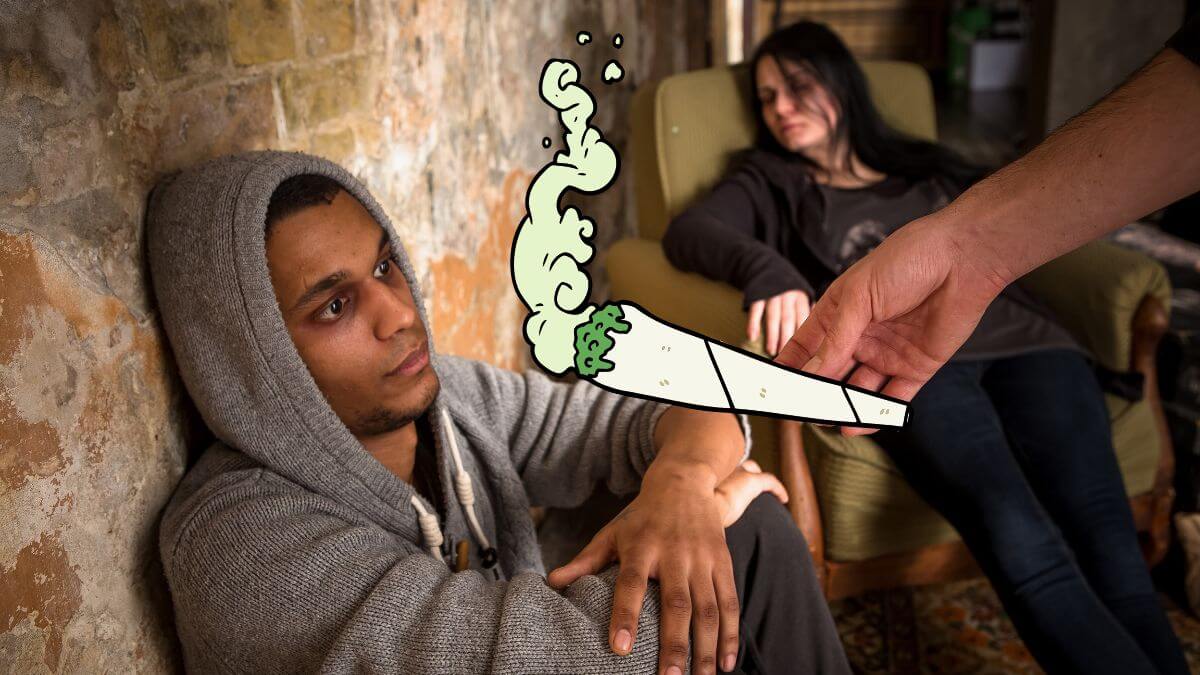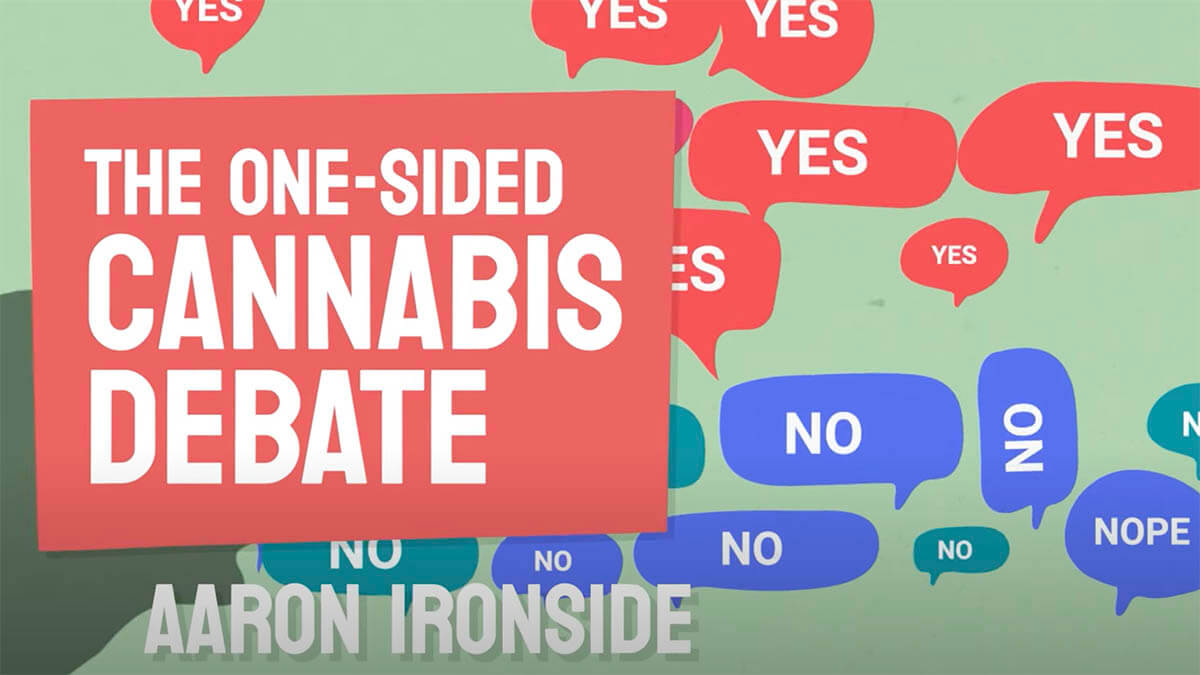
Yet more research showing the negative health outcomes from cannabis use, especially for young men. It is estimated that 30% of cases of schizophrenia among men aged 21-30 might have been prevented by averting cannabis use.

Yet more research showing the negative health outcomes from cannabis use, especially for young men. It is estimated that 30% of cases of schizophrenia among men aged 21-30 might have been prevented by averting cannabis use.

Legalised drug crisis is harming young people far more than most realise says Kevin A. Sabet, Ph.D, president of Smart Approaches to Marijuana (SAM). Kevin will be a presenter at our upcoming NZ Forum on the Family.

If you thought decriminalising cannabis was a good idea, take a look at San Francisco… it’s a mess and has lost its way. The smell of weed on the streets is embarrassing, and the number of stoned people who work in retail and serve you, even more so.

With cannabis more readily available in many US states, more elderly people are using cannabis – leading to a rapid rise in emergency room visits (Journal of the American Geriatrics Society). While the elderly are mostly using cannabis for medicinal purposes, the data reveals a rapid rise in ED admissions as a result. This raises concerns about the safety of even medicinal cannabis, especially for the elderly.
A study published in the Journal of the American Geriatrics Society reveals a disturbing trend of increased cannabis-related emergency room visits by elderly people. The study conducted a trend analysis of cannabis-related ED visits from all acute care hospitals in California from 2005 to 2019. Over that period, the cannabis-related ED visit rate increased by 1804% for adults aged ≥65. According to the study: “Older Black adults had the highest cannabis-related emergency department visit rate in 2019 across racial and ethnic demographics”. Older males had a higher rate of admission than females.
The use of cannabis among older adults is increasing in the US since cannabis has been legalised and marketed in many states (for both medical use and recreational use). As more states legalise marijuana, more older adults are experimenting with the substance, the study’s authors wrote. The elderly cohort mostly use cannabis for medicinal purposes – to help alleviate chronic health conditions. However older people are at a greater risk of cannabis effects, and unfortunately many are unaware of these potentially harmful effects. Older adults who’d previously taken cannabis earlier in life are even more likely to be ‘overly confident’ about cannabis use later in life.
“Many patients assume they aren’t going to have adverse side effects from cannabis because they often don’t view it as seriously as they would a prescription drug,” said lead study author Benjamin Han, a geriatrician at the UC San Diego School of Medicine.
“I do see a lot of older adults who are overly confident, saying they know how to handle it — yet as they have gotten older, their bodies are more sensitive, and the concentrations are very different from what they may have tried when they were younger,” Han said in a statement.
Cannabis definitely slows reaction times, but can also increase the risk of psychosis, delirium and paranoia, interact with other prescription medications and worsen pulmonary or cardiovascular diseases. In the past 10 years alone, concentrations of tetrahydrocannabinol (THC) — the psychoactive component of cannabis — have more than doubled, further raising the risk of psychosis and cannabis use disorder.
“Although cannabis may be helpful for some chronic symptoms, it is important to weigh that potential benefit with the risk, including ending up in an emergency department,” Han said.
The rise of hospital emergency room admissions certainly raises concerns about the safety of even medicinal cannabis, especially for the elderly.
Read the full report here: https://agsjournals.onlinelibrary.wiley.com/doi/abs/10.1111/jgs.18180

Ongoing and mounting research links marijuana use with depression, schizophrenia, and even violent aggression. The risk is even greater amount youth, whose brains are still developing.

Canada continues sliding down the slippery slope towards legalising all hard drugs. The Canadian province of British Columbia has recently begun a trial decriminalising hard drugs such as cocaine and heroin.

In an excellent presentation from new website commonroomnz.com, Aaron Ironside – an experienced broadcaster – shares his experience of being a spokesperson for the No side during the 2020 cannabis referendum debate.

In 2020 Aaron Ironside was the front-person for the Say No To Dope campaign, a homegrown campaign opposing the legalisation of recreational cannabis in New Zealand. We succeeded in that mission, getting New Zealand to vote NO to cannabis legalisation. It was a hugely important win for the wellbeing of New Zealanders, it was also a win against the odds.
As Aaron shares in this video …
“Say Nope To Dope was up against ten YES campaigns, and a media determined to give them an advantage. It wasn’t a fair fight.”
There was significant media bias towards legalising cannabis. An in-depth analysis of media coverage of the cannabis referendum found that the YES position in the cannabis debate received a heavily biased share of the media coverage during the campaign period. New Zealanders did not receive balanced objective new coverage.
We thank Aaron for his efforts in the Say No To Dope campaign, and we especially thank all New Zealanders who voted NO to cannabis legalisation.
Video from: Common Room NZ)

The UN’s Drugs Control Board has issued a warning, stating that “moves by governments to legalise non-medial use of cannabis have led to increased consumption without explaining the potentially serious health dangers that users face from the drug”. The data clearly shows increased consumption and “negative health effects and psychotic disorders” among some recreational cannabis users. Admissions for cannabis-related psychotic disorders have quadrupled worldwide. There’s also been a surge in cocaine production and trafficking. Regarding the recreational use of cannabis, the UN panel expressed concern that the “growing” industry was fuelling the shift to even greater use of the drug, by advertising their products “particularly to young people, in ways that lower the perception of risk”… Governments are understating the risks.
This is important for New Zealand’s ongoing debate around drug legalisation. Despite this country voting NO to legalising dope in the 2020 cannabis referendum, pro-drug advocates such as the NZ Drug Foundation and the Green Party continue to push for drug legalisation – claiming that legalisation will address the health issues relating to drug use. Errr, no it won’t! The pro-drug agenda is constantly amplified by the mainstream media despite the evidence from overseas countries that drug legalisation is nothing short of a disaster. This latest warning from the UN totally refutes the claims of New Zealand’s pro-drug advocates.
Here’s the full article from UN News below:
Issuing the warning at the launch of its annual report, the International Narcotics Control Board (INCB) cited data indicating that the trend caused “negative health effects and psychotic disorders” among some recreational cannabis users, while also contravening the UN 1961 Single Convention on Narcotic Drugs.
Tweet URL
“In all jurisdictions where cannabis has been legalized, data show that cannabis-related health problems have increased,” INCB said. It pointed out that between 2000 and 2018, “global medical admissions related to cannabis dependence and withdrawal increased eight-fold. Admissions for cannabis-related psychotic disorders have quadrupled worldwide.”
Cocaine spike
The INCB also pointed to a surge in cocaine production and trafficking in 2022, and in the chemical “precursors” that are required to make drugs including heroin, cocaine and amphetamines.
“High levels of (cocaine) purity have become available at cheaper prices,” the UN body said, linking the development to evolving criminal activity “in locations where coca bush is grown”.
European shift
Highlighting another worrying trend, the INCB noted that traffickers have set up more cocaine processing operations in Europe, “which accounted for six of the 15 cocaine processing laboratories discovered globally” last year.
And in a call for global action to tackle the opioid “overdose epidemic”, the INCB warned that trafficking in fentanyl and other dangerous opioids “is expanding” to Oceania.
In the US, the opioid epidemic and drug overdose crisis worsened in 2022, the drugs watchdog said, because of illegal manufacturing and increased drug smuggling.
Start-up formula
Another concerning facet of the illegal drugs industry over the past year is the “increased sophistication of trafficking entrepreneurs”, who have been quick to replace controlled substances with alternative chemicals that are not subject to international controls.
After recording a high number of seizures of these “precursor” chemicals that are used to make illegal drugs in 67 countries on five continents, INCB issued a warning to Member States to beware of increased trafficking of these substances “and the speed with which the illicit drug industry circumvents international controls”.
International rules governing precursor chemicals control are detailed in the UN Convention against Illicit Traffic in Narcotic Drugs and Psychotropic Substances, adopted in Vienna on 19 December 1988.
The Convention refers specifically to “substances frequently used in the illicit manufacture of narcotic drugs and psychotropic substances” and requires that countries control and monitor the legitimate trade in drug precursors, to prevent their illegal use.
ONU News/Alexandre Soares Experts examine a shipment of cocaine seized in Guinea-Bissau.
Understating the risk
Regarding the recreational use of cannabis, the UN panel expressed concern that the “growing” industry was fuelling the shift to even greater use of the drug, by advertising their products “particularly to young people, in ways that lower the perception of risk”.
“In the United States, it has been shown that adolescents and young adults consume significantly more cannabis in federal states where cannabis has been legalized compared to other states where recreational use remains illegal,” the INCB’s latest report said.
New cannabis-based products, including “edibles”, or vaping products marketed in eye-catching packaging have increased the trend, the report’s authors continued, warning that these tactics have contributed to a “trivialization” of the impacts of cannabis use in the public eye, especially among a younger demographic.
“This is a major cause for concern as is the way the harms associated with using high-potency cannabis products are being played down,” said INCB President Jagjit Pavadia.
Bitter pill
Focusing on inequalities between countries regarding access to opioid-based pain relief drugs, the UN board said that “many” nations continue to struggle to secure sufficient supplies.
This is also the case for medications containing morphine, even though opiate raw materials “are sufficiently available”, the INCB said, adding that these supplies remain “concentrated in high-income countries”, where similar disparities also exist for anti-epileptic drugs and medication to treat attention deficit hyperactivity disorder (ADHD).

The mainstream media’s focus on the liberalisation of drug laws continues. Many of them have never got over the shock that a majority of NZers voted no to legalising cannabis in the 2020 referendum. But that hasn’t stopped their campaigning, In the space of a fortnight near the end of last year, there was Radio NZ’s documentary by Guyon Espiner called “Wasted”– also shown on TVNZ. Then it was Patrick Gower on Newshub. And just before Christmas, it was TodayFM and reporter Willemena Shrimpton who joined the ‘drug campaign’. We check out the latest documentary on offer.